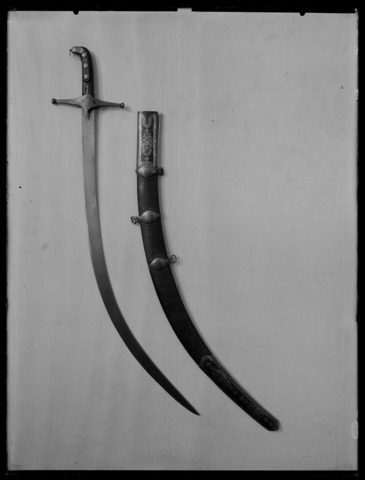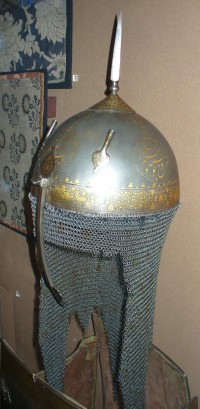By Always Narnian
C.S. Lewis’ world in The Chronicles of Narnia is a fantastical one, though in several ways it was inspired by actual countries and cultures. The two stories that really allow you to see these cultural influences are The Horse and His Boy and The Last Battle. As a result of this, we shall mostly be focusing on the lands of Narnia and Calormen, though we shall briefly touch on a few others.
Narnia is a land seemingly influenced by European history and culture. The fact that King Frank and Queen Helen (the first rulers of Narnia) were an English couple may explain why Narnia reminds one greatly of England. However, many of the creatures in Narnia are based off of characters in Greek Mythology.
Calormen, a land south of Narnia, is very much like a Middle-Eastern country. Calormen’s greatest city, Tashbaan, rests next to a great expanse of desert. In a letter to his publisher, C.S. Lewis said of Pauline Baynes’ inspiration for illustrating The Horse and His Boy: “As to realism in the new one, Miss Baynes may base her ideas of Calormene culture either on the picture of the Arabian Nights world, or on her picture of Babylon and Persepolis (all the Herodotus and Old Testament orient) or any mixture of the two.” [1] Persepolis was the capital of the ancient Persian Empire around 515 B.C. Also known as Parsa, Persepolis was a city built on terraces— the same fashion in which Tashbaan is built. [2]
The people of Narnia are often fair-haired and white, whereas the Calormenes are dark. A description is found in The Horse and His Boy, commenting on how even the characteristics of Narnians were different from that of the Calormenes: “…instead of being grave and mysterious like most Calormenes, they walked with a swing and let their arms and shoulders go free, and chatted and laughed.” The Calormenes have rigid ceremonies and elaborate gear, and also speak with eloquence, as seen in The Horse and His Boy, where story-telling is nearly considered an art to be learned by all Calormenes.
The straight swords used in the land of Narnia are broadswords, which were often used in Europe during the Middle Ages. Calormenes carry scimitars, swords with curved blades. Curved swords were used by cultures such as the Turks, Persians, and Arabs. These swords likely began with Turko-Mongol sabers. The word ‘scimitar’ could possibly be a derivation of the word ‘shamshir,’ a sword of the Persians. [3] Scimitars are often used on horseback— an interesting fact considering the importance of war horses in Calormen.
Calormenes wear turbans while Narnians either uncover their heads or wear metal caps. Pauline Baynes even drew the Narnian’s helmets in The Last Battle very alike to European skullcap or cervellière helmets. Calormenes wear spiked helmets, oftentimes surrounded by a turban. Aravis is illustrated with a helmet that resembles an Indo-Persian helmet called a kulah khud.
In The Horse and His Boy there is a man, Ahoshta Tarkaan, who becomes the Grand Vizier. ‘Vizier’ was a word used for an officer of the Ottoman (Turkish) Empire. The title ‘grand vizier’ was also used in the Ottoman Empire a little later for the representative of the sultan. [4] Cair Paravel, the main castle of Narnia, where Peter the High King and his siblings ruled, has an etymology of British, Old French, and Latin words. Another fascinating thing to note is the money of Calormen is called ‘crescents.’ This is significant because the symbol of the Ottoman Empire became the crescent after their conquest of Constantinople.
Although there is much information to reasonably verify that Narnia is based off of Europe and Calormen off the Middle East, there are a few other cultures in Narnia where speculation is the only tool we can use. An example of this would be the Telmarine people. Though we know that the Telmarines were a piratical people from the South Sea in our world, were transferred into the land of Telmar, and from there went on to conquer Narnia, little is known about their culture or fashion. They have a fear of the woods and the sea— this fear having arisen from the tales they heard of Aslan coming over the sea.
Another land to consider is Archenland, where King Frank and Queen Helen’s second son became king. This land appears to be much akin to Narnia, as seen in Bree saying of Shasta: “…he’s certainly either a Narnian or an Archenlander.” Thus, making it most likely that Archenland is also a land of European influence, and that the people of Narnia and Archenland are similar in appearance.
Charn is a kingdom only briefly visited in The Magician’s Nephew, but a few things are said about it that we could theorize upon. There is a scene that describes Charn as having “temples, towers, palaces, pyramids, and bridges” and that “Once a great river had flowed through the city…” Jadis also describes the city as “the wonder of the world, perhaps of all worlds.” Chariots are mentioned, as well as the river running red (likely from blood) during the disastrous last battle of Charn. Jadis is also depicted in the drawings with a band around her arm which appears to be made in the likeness of a coiled snake. All these things seem to point to an Egyptian influence, though this cannot be completely proven, and in some places Charn could also be thought to take after ancient Persia, as to Jadis’ mention of Charn being “the city of the King of Kings” (a title of Kingship Darius of Persia took as well).
Existent cultures can either be a richening addition to fantasy realms, or else a distraction. C.S. Lewis’ incorporation seems to work well, adding variety and depth to his stories— realism, as Lewis said in his letter about Pauline Baynes’ work on The Horse and His Boy. This type of realism mixes history with fiction, allowing the reader to relate with the story in a familiar way. What are your thoughts on this technique and what are some influences you may have observed in the Narnia series?
[1] The Collected Letters of C.S. Lewis, Volume III: Narnia, Cambridge and Joy 1950-1963
[2] Ancient History Encyclopedia
[3] Weaponry: An Illustrated History by Chuck Wills
[4] Encyclopædia Britannica
(photo sources: Wikimedia Commons)





Very interesting! Especially the links between Charn and Egypt.
The Telmarines remind me a little bit of the Old English (like, old-old Old English), especially with their reasoning and ideas.
Yeah, I never really thought about Egypt and Charn, until I noticed one time it said pyramids and then I read a few other things and was like…Huh.
I remember reading that the name “Tarkaan” is probably from “Tarkhan” which is a Turkish/Iranian name for a certain rank of official.
I always associated Charn with Atlantis (which is mythical of course, rather than real world, but associated with our world). Probably partly because both are important in the start of MN, but also in terms of architecture and the little we know of their culture (proud, ancient but advanced, desire for power) there seem to be similarities. The fact that Charn is in ruins – a civilisation that was once great but now crumbling – probably adds to the similarities. I can also imagine Charn having many of the characteristics Plato describes for Atlantis.
Nice article. One expression bothers me though which you used more than once. “Based off of”. That is a popular way of saying “Based on”, or “Based upon” but is really really bad English grammar and does not even make sense. If something has a base, it is ON the base. Just sayin’.
I always felt that Calormen had Indian influences with their apparent pantheon (although three are only mentioned) of gods and goddesses as well as the young age of marriage though this is not nessesssarily specific to to them. As for Charn, another culture I recently learned of in church was the and which may also have given Lewis was the Assyrians who were especially brutal and the Hittites. But perhaps they were only an almalgum of cultures. A study of history reveals that culture can be cruel and brutal as Aslan warns Digory and Polly at the end MN.